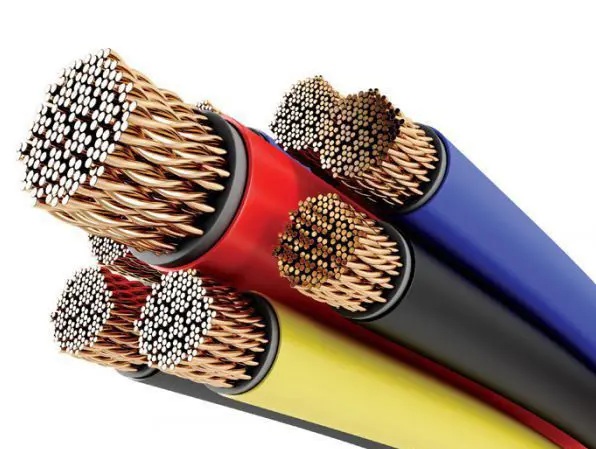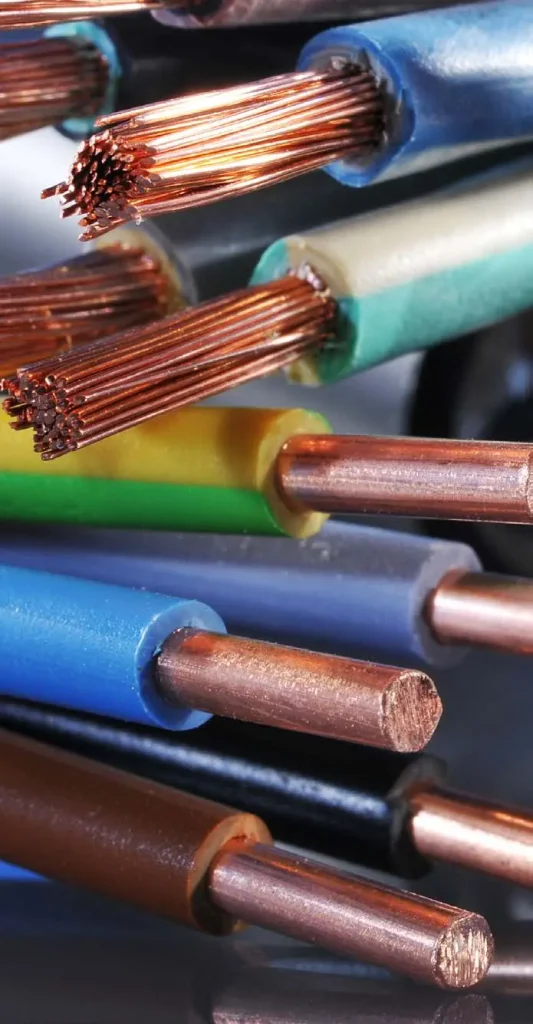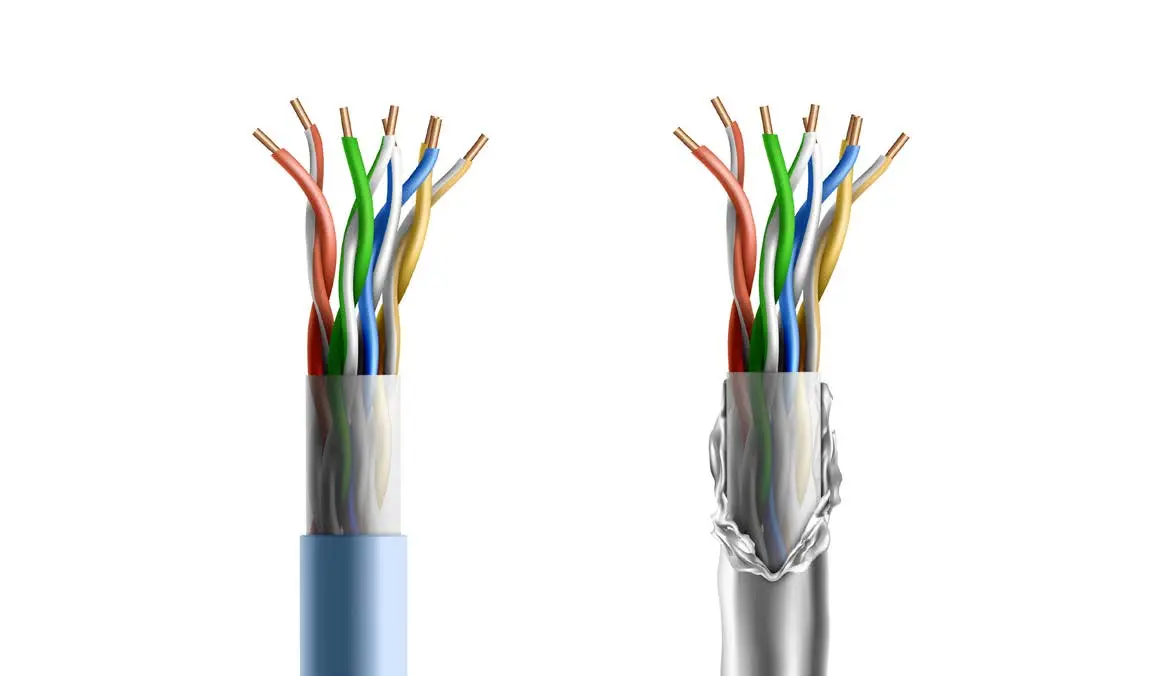Electrical cables transport electrical energy from one point to another. A cable is an assembly of one or more electrically conducting wires which is used to carry electric current. Electricity travels along some materials more easily than others and materials are divided into conductors and insulators.
Components of Electrical Cable
- Conductors: are the electricity transmitting wires in a cable. These are made from high conducting metals like Copper and Aluminium which have low resistance.
- Insulators: are bad conductors of electricity, insulators do not allow electricity to pass through them.
In earlier times, paper, cloth, or rubber were used as insulating materials. However, these Polyethylene, and Butyl Rubber.
The conductors, usually copper wires, are covered with insulating material to prevent contact with each other, or with any external conducting materials. Insulation varies in thickness Wamount of current they have to carry: the greater the current, the thicker the conductor.

- Cable metal protection: In some cases the cables may have metal protections. Electrical metal shields (screens) are applied to isolate the signals that pass through the interior of the cable from possible external interference.
Mechanical protection (armours) protect the cable from possible external aggressions and damage. - Outer Sheath: The function of this outer insulator jacket
is eminently protection. The sheath protects the cable from atmospheric conditions like high moisture in the air, chemical reactions, or free attacks. Commonly used sheaths are made from polyvynil chloride (PVC).
Types of electric cables by their application
Cables for electric panels: Flexible cables for wiring electric cabinets. These electric cables are especially suitable for domestic use, for installation in public places and for internal wiring of electrical cabinets, switch boxes and small electrical appliances.
Power cables: Energy cables for industrial facilities and public places. It is common to transmission in all types of low voltage connections, for industrial use and for variable frequency drive.
Armoured cables: Cables with aluminium or steel reinforcement for installations with risk of mechanical aggression. It is also common to are present, as well as in installations in premises with a risk of fire and explosion.
Rubber cables: The use of extra flexible rubber cables is very varied. We can find rubber cables in fixed industrial installations as well as in mobile service. Welding cables should have a rubber sheath, which allows high currents to be transmitted between the welding generator and the electrode.
Halogen-free cables: Low Halogen Cables with low smoke and corrosive gas emission of electrical panels and public places, installations of all kinds in public places, individual derivations, emergency circuits, public distribution networks and also for mobile service.
Flame retardant cables: These cables are specially designed to transmit electrical energy in the extreme conditions that occur to emergency equipment such as signalling, smoke extractors, acoustic alarms, water pumps, etc. Their use is recommended in emergency circuits in places with public concurrence.
Control cables: Control cables for fixed or mobile installations should be extremely household appliances, for the interconnection of machine parts used for manufacturing, for signalling and control systems, for the connection of motors or frequency converters, for signal transmission where the voltage induced by an external electromagnetic field may affect the transmitted signal or for power supply connections to avoid generating electromagnetic fields.
Instrumentation cables: These are flexible and shielded cables for the transmission of signals between equipment in industrial installations. Especially suitable for optimum data transmission in environments with a high level of electromagnetic interference.
Solar cables: These cables are particularly suitable for connecting photovoltaic panels, and from the panels to the DC to AC inverter. Thanks to the design of their materials and their cover, which is especially resistant to solar radiation and extreme temperatures, they can be installed outdoors with full guarantees.
Aluminium Overhead Conductors: Bare or insulated Aluminium conductors are suitable for transmission and distribution lines.

Types of colours in electrical cables and their meaning:
The colours of the electrical cables are governed by the International Electrical Commission Standard
the following colours are allowed: black, brown, red, orange, yellow, green, blue, violet, gray, white, pink and turquoise.
• Neutral conductor: blue. It is recommended not to use more blue conductors to avoid confusion.
• Phase conductor: black, grey or brown.
• Protective or earthing conductor: two colours, yellow and green.
Importance of Standards in the manufacture of cables
The Zimbabwean cable manufacturer satisfies the International Electrical Commission requirements by accreditation to ISO 9001 though Standards Association of Zimbabwe (SAZ) and South African Bureau of Standards (SABS).
Adherence to standards ensures quality and safety of cables.
• The local manufacturer was the first Zimbabwean entity to gain accreditation to ISO 9001:2015 Quality Management Standard in 1993.
• Environmental Management Standard ISO 14001:2015 –First Zimbabwean company to be accredited in 1999
• Occupational Health and Safety Standard ISO 45001:2018 –Accredited in 2009
• Energy Management Standard ISO 50001:2018 – First Company in Sub-Saharan Africa to gain accreditation in 1026
To avoid purchasing and installing sub-standard or smuggled cables and for recommended technical advice, buy all your cable requirements directly from the local manufacturer.
Text: Cafca
From: E&P ISSUE 12

